Rescuing seed’s heritage: looking for words to open the black box
There is a paradox between the centrality of cultivated seeds to guarantee human resilience and the scant historical knowledge available on these seeds. Since the Neolithic, domesticated seeds have been part of the daily life of diverse social groups in different...
Rethinking agricultural specialization
The management of diversity – related to human activities and plant-animal interactions – has ensured both the stability and the transformation of a great variety of farming systems in different geographical and historical contexts. Building on diversity and...
The Salvador family’s contribution to the botany in the Iberian Peninsula
The Salvador family was a well-known family of apothecaries from Barcelona, who developed their work around naturalism between the 17th and 19th centuries. They collected samples in the Iberian Peninsula and the Balearic Islands, creating one of the first scientific...
Spelt wheat in Iberia: from the East came a northern crop
The introduction of spelt in Iberia has been attributed to Germanic people and the Romans. However, we know now it was cultivated before that, at least since the 5th century BC, in the northernmost regions. How and from where this crop came is still largely unknown,...
Fieldwork notes on the rye culture in the South of Portugal
Rye field. Photo: Luísa Ricardo/Municipality of Tavira, 2023I am in the middle of a rye field waving in the wind. It's almost harvest time. I am writing from the South of Portugal, Northeast of the Algarve hills, in the parish of Cachopo, council of Tavira. It is a...
Variability and dynamics of Nordic rye
In the late medieval period, cereal cultivation and consumption in Scandinavia changed. After almost 2000 years of having barley (Hordeum vulgare) as the primary grain crop, the use of rye (Secale cereale) increased fast. The reasons for this shift are not fully...
The Botany Archive of the University of Coimbra: a complex and fascinating puzzle
In 1772, a garden became part of Coimbra’s landscape. A botanical garden that was not intended for princes, but rather a venue for learning and leisure, a meeting place between nature and knowledge. It was organised to enable the study of plants from the country and...
Friedrich Haberlandt and the soybean
In the course of the 19th century, natural scientists in Europe took notice of a “miraculous stranger”, a nutritious cultivated plant rich in fats and protein - the soybean. One of the most renowned soy pioneers was Friedrich Haberlandt, a 46-year-old botanist and...
“Inconita et non peiu visto”: American flora in the Museo del Prado collections
The first impression that Europeans had upon arriving in America was that of exuberant nature, plenty of plants and animals whose forms were hardly comparable to those of known nature. Christopher Columbus himself demonstrated this with the peculiar selection of...
Oranges from Portugal
In the 19th century, the development of chemical medicine determined the end of the bitter orange, which will remain just as a rootstock or a decoration tree. The sweet orange tree starts to earn real protagonism and turns out to be an ingredient of several recipes....

The Seeding Ideas blog was published monthly from November 2019 to October 2023. The Editorial Board was composed of ReSEED team members. Publication and editing were coordinated by Caroline Delmazo. We aimed to share ideas, discussions, and findings from our research. Besides the team members and collaborators, we invited researchers from diverse scientific fields to contribute to this amazing interdisciplinary journey. We thank all authors and readers!
